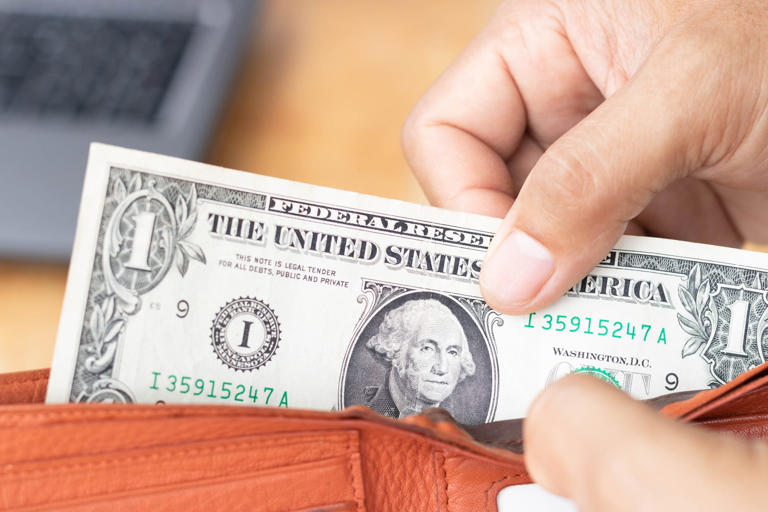If you’re thinking about using $1 bills for something as mundane as buying a lottery ticket, you might want to pause and examine those bills closely. According to a report from Wealthynickel.com, there’s a chance that those seemingly ordinary dollar bills could be worth a small fortune, up to $150,000, if they happen to share a unique printing error.
These coveted bills are part of two specific batches printed by the U.S. Bureau of Engraving and Printing in 2014 and 2016. Interestingly, these bills entered circulation before anyone noticed the error. The first batch hit the streets in New York, while the second came from Washington D.C., resulting in a total of 6.4 million banknotes being dispersed into the economy.
Under the right conditions, with matching serial numbers and specific criteria, currency collectors are eager to pay anywhere from $20,000 to $150,000 for a pair from these limited batches. However, only nine such rare pairs have been discovered so far, leaving potentially valuable $1 bills in circulation.
To determine if you’re holding onto these prized bills, WealthyNickel advises checking for specific characteristics:
- Series Date: Look for the series date reading “Series 2013,” located on the right side of George Washington’s portrait.
- Federal Reserve Seal: Verify that there’s a “B” Federal Reserve Seal above the serial number.
- Serial Number: The serial number should feature a star and fall within the ranges “B00000001★ – B00250000★” or “B03200001★-B09600000★”.
You’ll need to have two $1 bills meeting these criteria to potentially cash in on their significant value.
Aside from the potentially lucrative $1 bills with printing errors, other types of currency can also fetch impressive sums. Uncirculated $2 bills from 1890, for example, may fetch up to $4,500 each, while those from nearly every year between 1862 and 1917 could be worth at least $1,000, according to estimates from U.S. Currency Auctions.
The value of these collectibles depends on various factors, including the printing method and location. Even seemingly insignificant coins like nickels can have considerable value, ranging from about 50 cents to over $1,000, depending on factors like minting location and condition. For instance, a 1921 buffalo nickel with an “S” mint mark for San Francisco could command $1,500 in mint or lightly circulated condition.
In rare cases, bills dating back several decades can fetch astronomical prices at auctions. For example, a $10,000 bill from 1934 sold for a staggering $470,000 at a Heritage Auctions event in Dallas. So, it’s always wise to thoroughly inspect your currency before parting with it, as you never know what hidden treasures you might possess.
